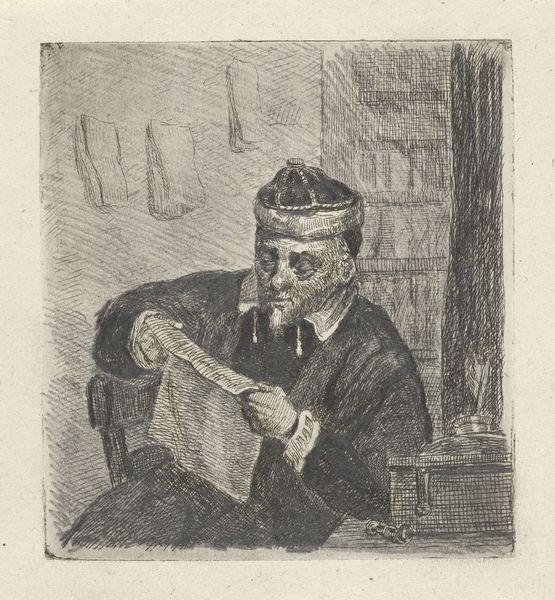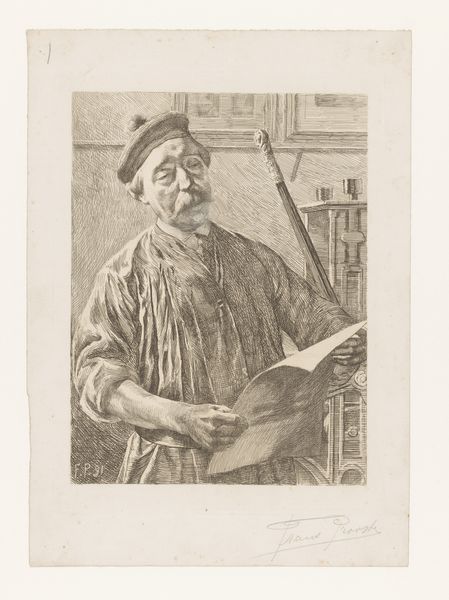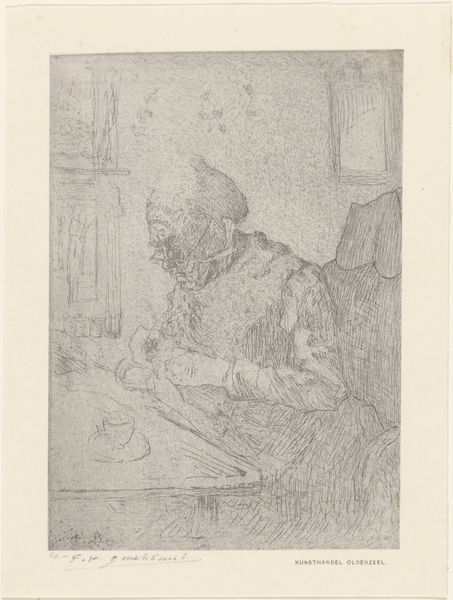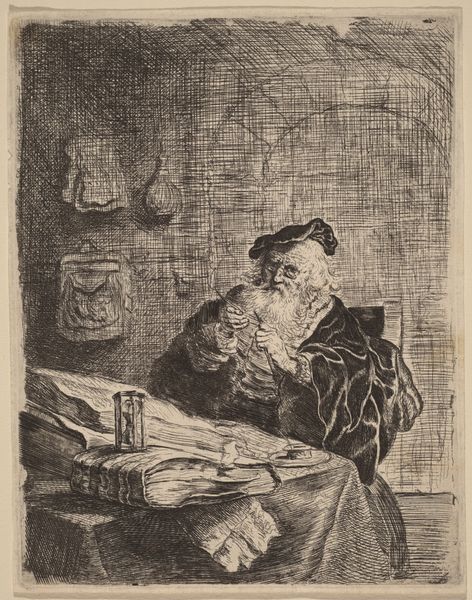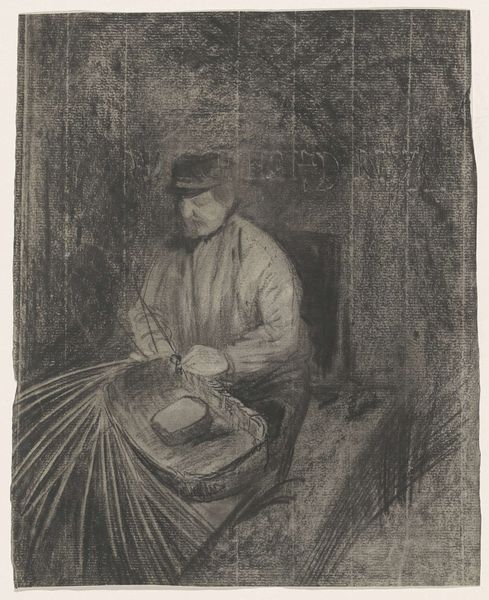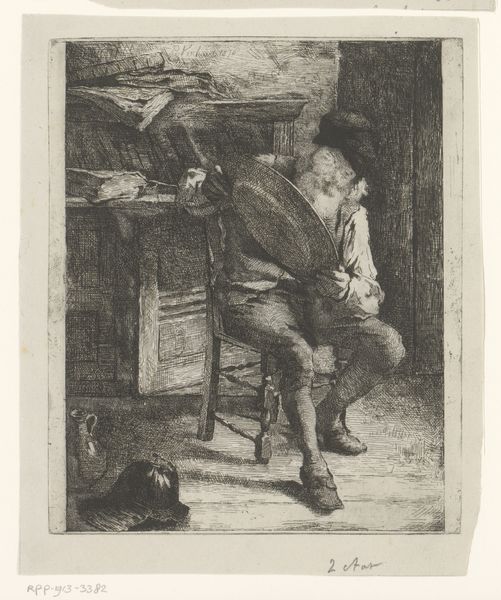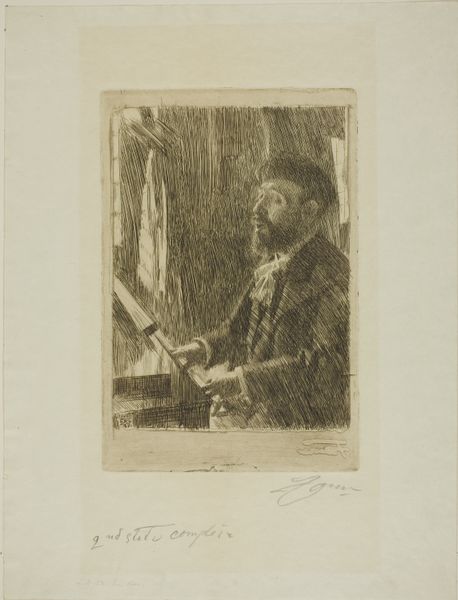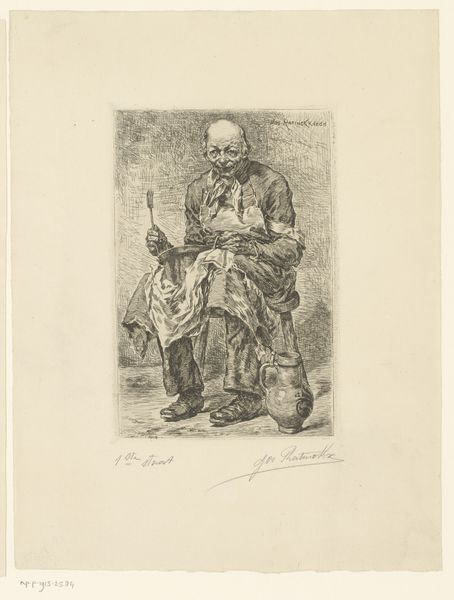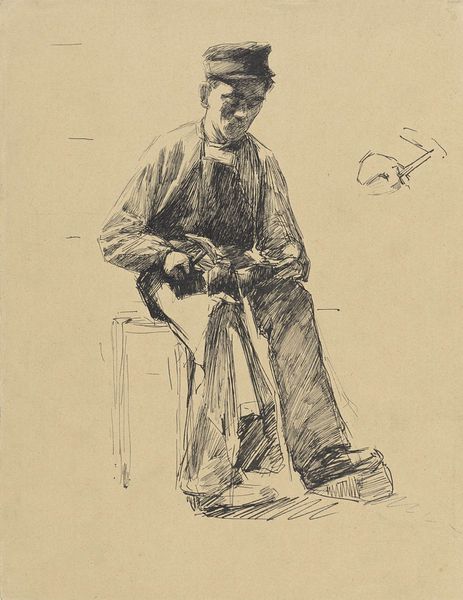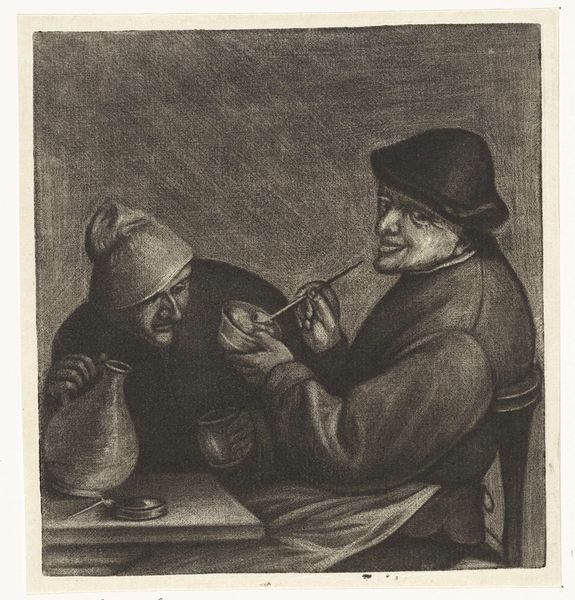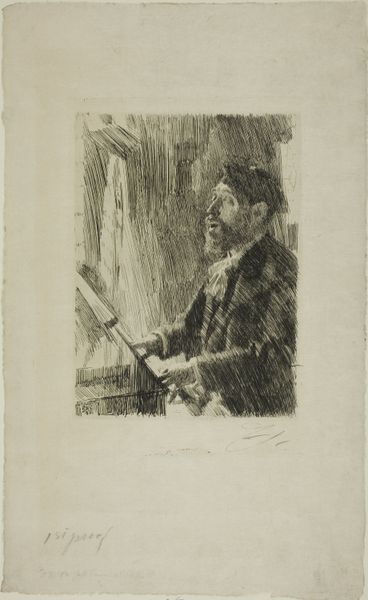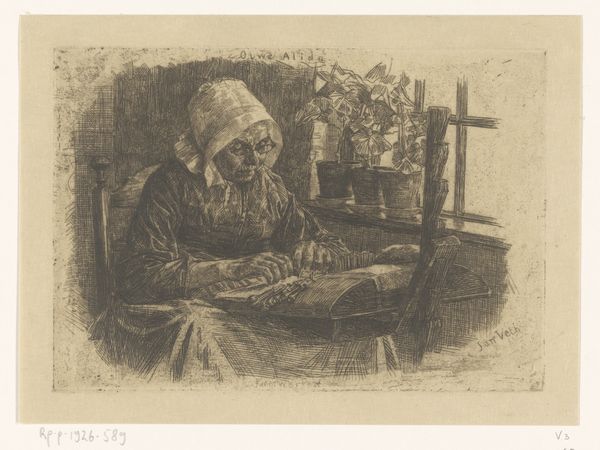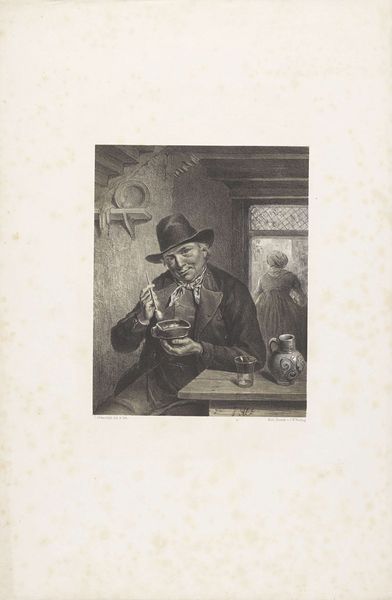
print, etching
# print
#
etching
#
realism
Dimensions: height 94 mm, width 86 mm
Copyright: Rijks Museum: Open Domain
Curator: Let’s spend a moment looking at this print, "Lezende man," or "Reading Man," by David van der Kellen. The Rijksmuseum places its creation sometime between 1814 and 1879. Editor: There's something wonderfully domestic about it, isn’t there? That soft, even light… He looks utterly absorbed. Curator: Indeed. Van der Kellen worked primarily as an engraver and printmaker. What we see here is an etching, a process involving biting lines into a metal plate with acid before printing. Notice the dense crosshatching, especially in the figure's clothing and face. This kind of rendering helps build volume and suggest textures with just a limited tonal range. Editor: And the material almost disappears. The image emerges not as ink on paper, but as this fully rendered, self-contained little world. Curator: In the context of 19th-century realism, it is important to understand printmaking served as a crucial method for circulating images and ideas, therefore making it interesting from a societal point of view. These prints democratized art by making images more accessible beyond the elite circles of painting patrons. The labor involved also speaks to a different economy of artistic production. Editor: Which contrasts with his obvious affluence, seated comfortably in what seems like his study. I like the glimpses we get into his surroundings – the odd papers tacked on the wall, the packed bookshelf. It makes him more believable. It suggests a lived life, captured. I imagine him pausing between lines, maybe sipping wine. Curator: Exactly! What's compelling about a work like this is that Van der Kellen presents a specific individual in a commonplace pose. Here, the artistic merit comes less from portraying a historical moment, and more from immortalizing the mundane. Editor: Maybe what I'm taking away is a feeling of gentle stillness. An invitation to savor the quiet pleasures of reading and contemplation. Curator: I concur. Thank you for lending me your impressions, and I think we can continue appreciating art like this from our different points of views.
Comments
No comments
Be the first to comment and join the conversation on the ultimate creative platform.
